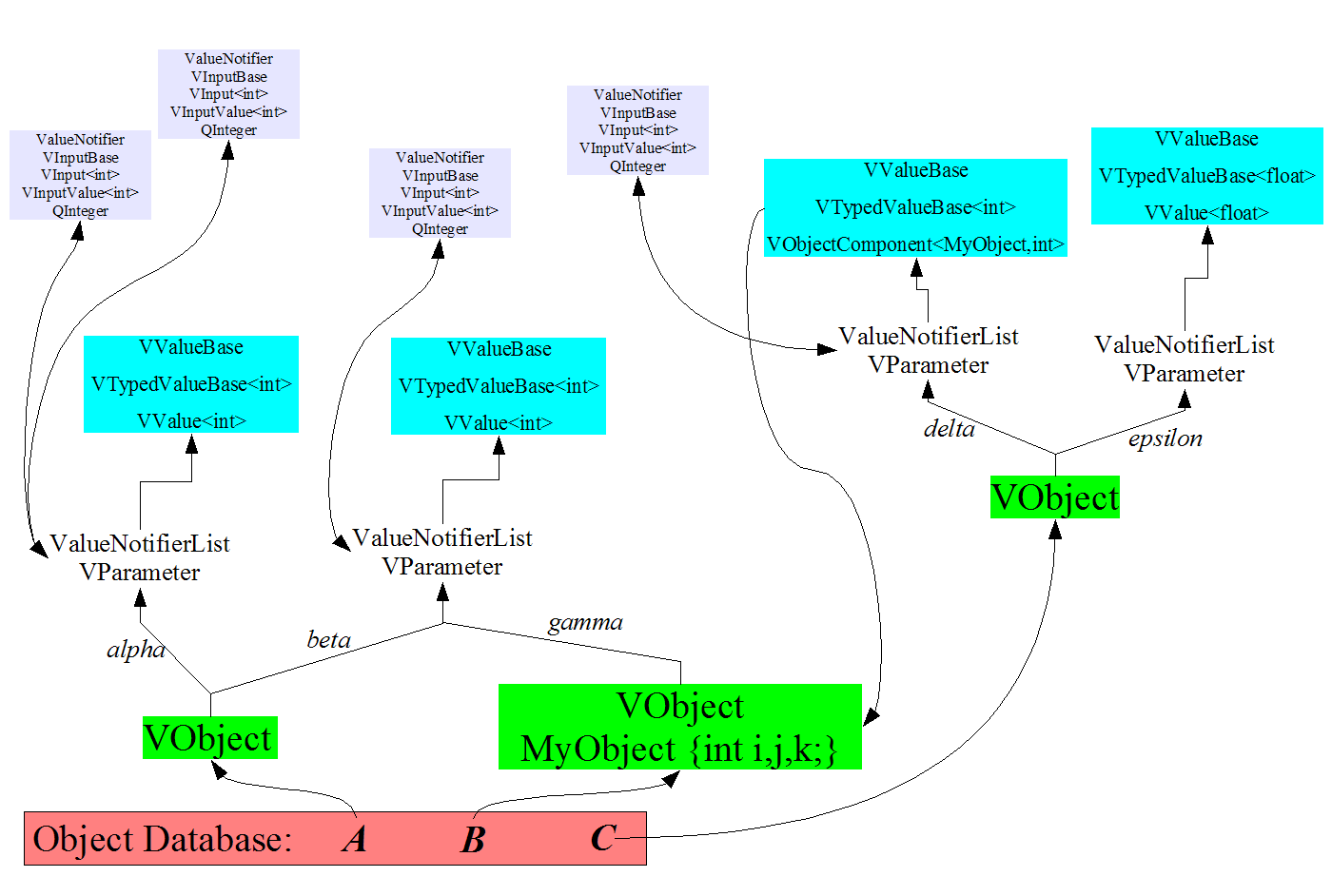We inspect a setup of three Vish objects named A,B and C.
Each box stands for an instance of the type of the last line shown in the box. Multiple lines in the box reflect the class hierarchy of this type. Arrows indicate accessible relationships.
In this network we have:
- object A with two parameters of type int, named "alpha" and "beta"
- object B with one parameter of type int, named "gamma"
- object C with one parameter of type int, named "delta", and a second parameter of type float, named "epsilon"
- the integer parameters A->beta and B->gamma are shared, i.e. they always hold the same value
- the parameter A->alpha has two input types of type QInteger, which for instance are two separate sliders in a GUI; upon change of one of them the other will receive a notify() call
- the parameter C->delta refers to a component in object B; thus any change in object B will be visible in object C, and when parameter C->delta is changed via an input slider of C, then object B will be modified.

 1.7.5
1.7.5